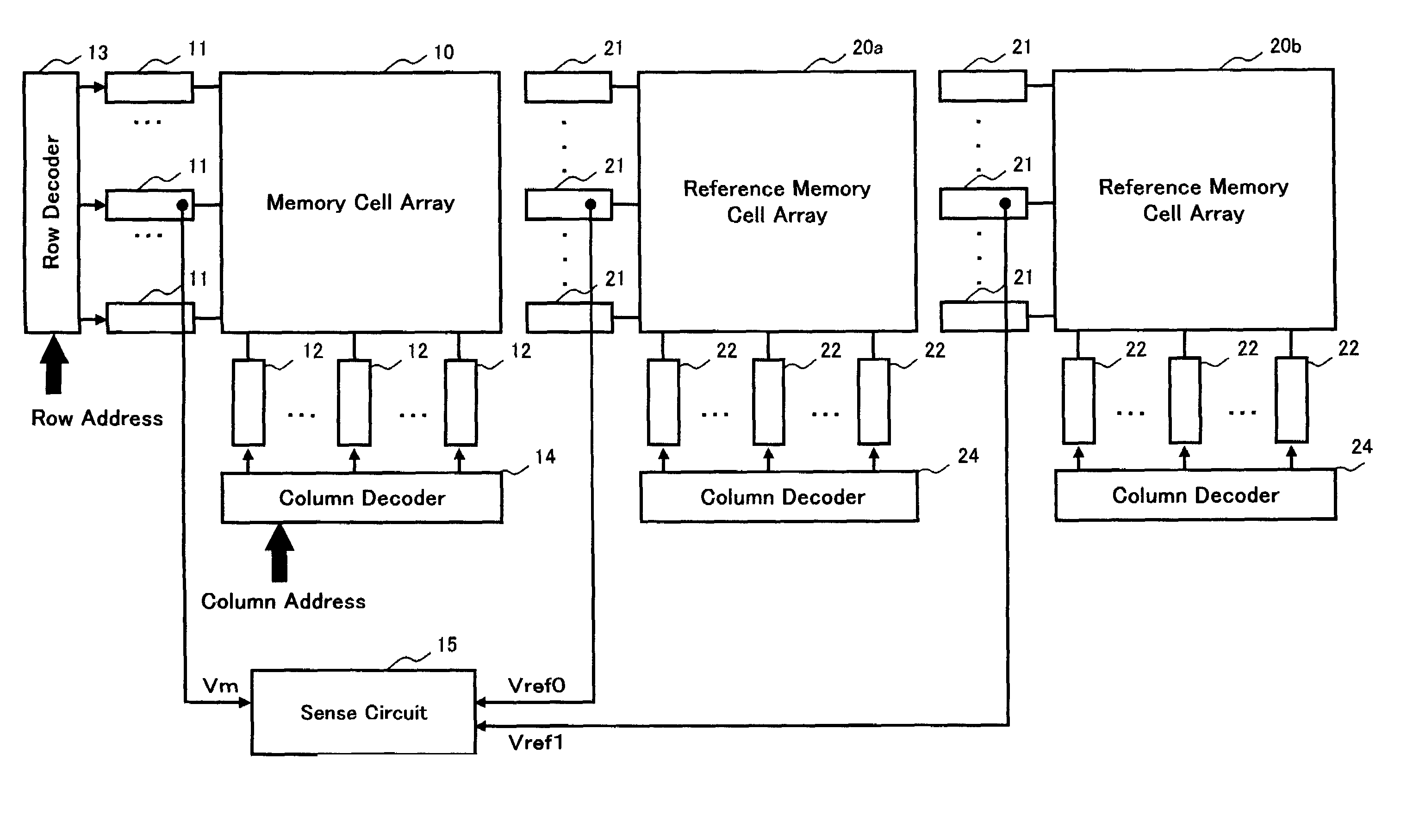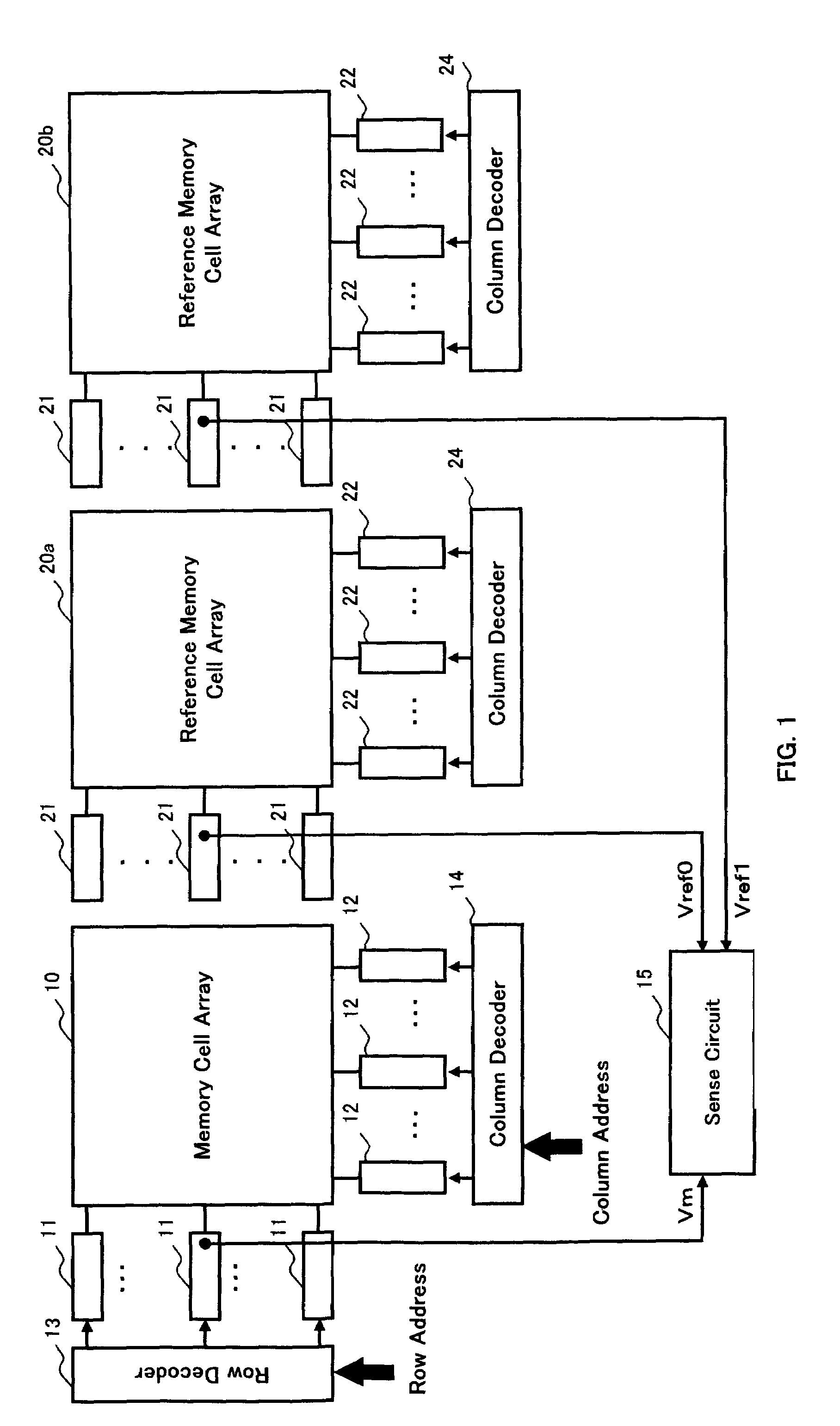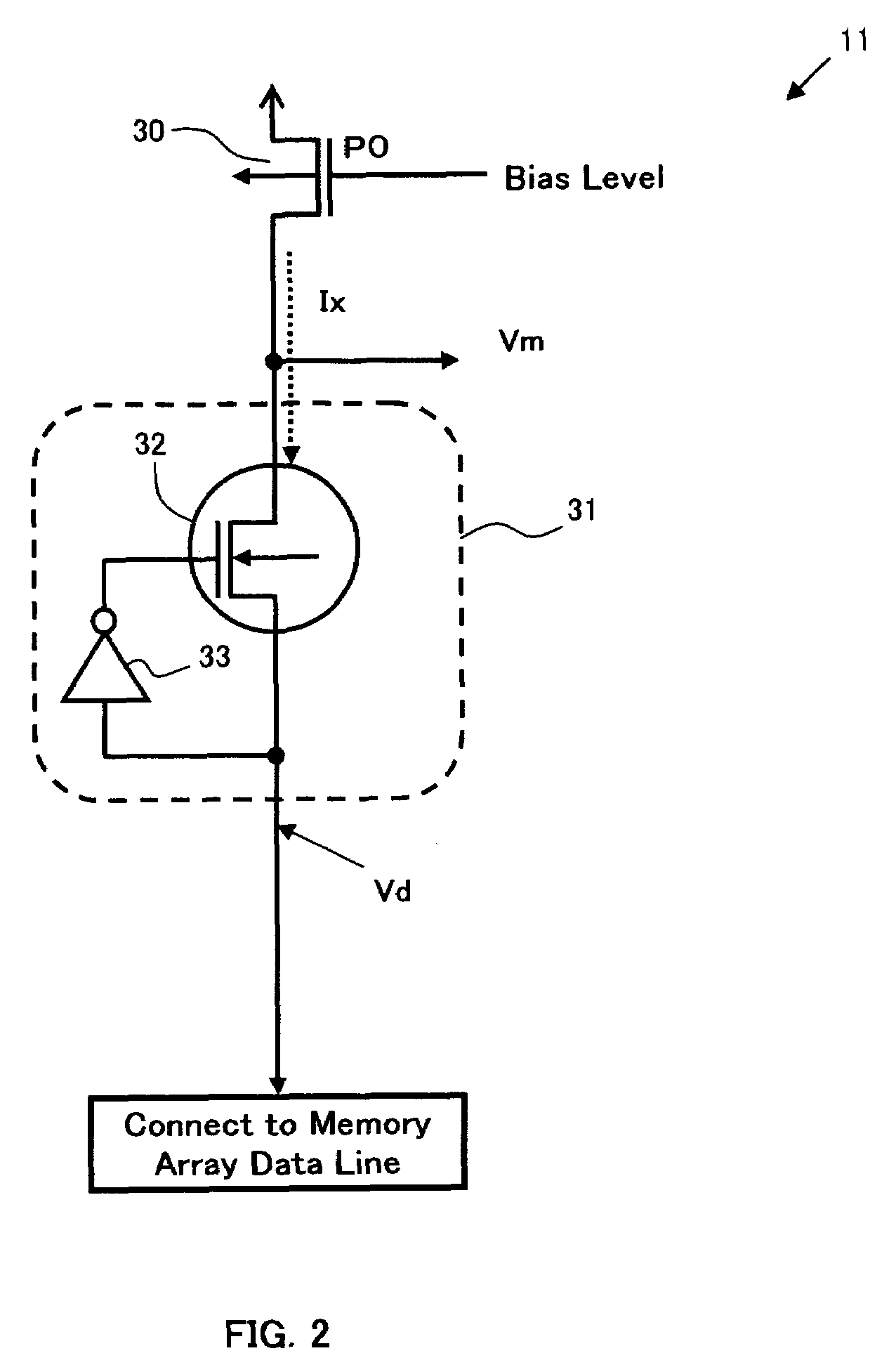Semiconductor memory device
a memory device and semiconductor technology, applied in the direction of information storage, static storage, digital storage, etc., can solve the problems of leak current flow back and difficulty in calculating the readout of memory cells, and achieve the effect of low cos
- Summary
- Abstract
- Description
- Claims
- Application Information
AI Technical Summary
Benefits of technology
Problems solved by technology
Method used
Image
Examples
embodiment 1
[0072]FIG. 1 is a block diagram showing a main part regarding a readout operation of a memory cell in a memory cell array 10 in the device of the present invention. The memory cell array 10 has a cross-point type of memory cell array structure, in which memory cells (not shown) comprising variable resistive elements which store information by a change of electric resistance are aligned in the form of array in the row and column directions, a plurality of data lines (row selection line) extending in the row direction and a plurality of bit lines (column selection line) extending in the column direction are provided, each memory cell in the same row has one end of the variable resistive element connected to the same data line, and each memory cell in the same column has the other end of the variable resistive element connected to the same bit line. For example, the memory cell array 10 has an array size 16×16 in row and column and in this case, each of the number of data lines and bit...
embodiment 2
[0125]Although the sense circuit 15 having the circuit constitution shown in FIG. 14 is illustrated as the sense circuit of the device of the present invention in the embodiment 1, the sense circuit is not limited to the circuit constitution shown in FIG. 14.
[0126]As shown in FIG. 16, the sense circuit may be consist of one or more stages of inverter circuit 15a. Referring to FIG. 16, the output Vm of the data drive circuit 11 read from a desired memory cell in the memory cell array 10 shown in FIG. 1 is input to the first stage of the inverter circuit 15a of the two-stage inverters. Since this inverter circuit 15a has a voltage amplifying function and a current amplifying function, a general sense amplifier (a circuit which determines binary data on the basis of a reference level and amplifies an output level) can be omitted. In addition, the number of stages of the inverter circuit 15a may be at least one. Here, an inversion level of the first stage inverter of the inverter circui...
embodiment 3
[0131]A third circuit constitution of the sense circuit of the device of the present invention will be described with reference to FIG. 19. According to an embodiment 3, as shown in FIG. 19, a sense circuit 15b comprises a first comparison circuit 16 which compares a voltage level Vm of a selected data line with a first voltage Vref0 which is converted from a first current state in which a current flowing in the selected data line when a high-resistance memory cell is read becomes a maximum level depending on a distribution pattern of an electric resistance state of other non-selected memory cells in a memory cell array, a second comparison circuit 17 which compares the voltage level Vm of the selected data line with a second voltage Vref1 which is converted from a second current state in which a current flowing in the selected data line when a low-resistance memory cell is read becomes a minimum level depending on a distribution pattern of an electric resistance state of other non-...
PUM
 Login to View More
Login to View More Abstract
Description
Claims
Application Information
 Login to View More
Login to View More - R&D
- Intellectual Property
- Life Sciences
- Materials
- Tech Scout
- Unparalleled Data Quality
- Higher Quality Content
- 60% Fewer Hallucinations
Browse by: Latest US Patents, China's latest patents, Technical Efficacy Thesaurus, Application Domain, Technology Topic, Popular Technical Reports.
© 2025 PatSnap. All rights reserved.Legal|Privacy policy|Modern Slavery Act Transparency Statement|Sitemap|About US| Contact US: help@patsnap.com



